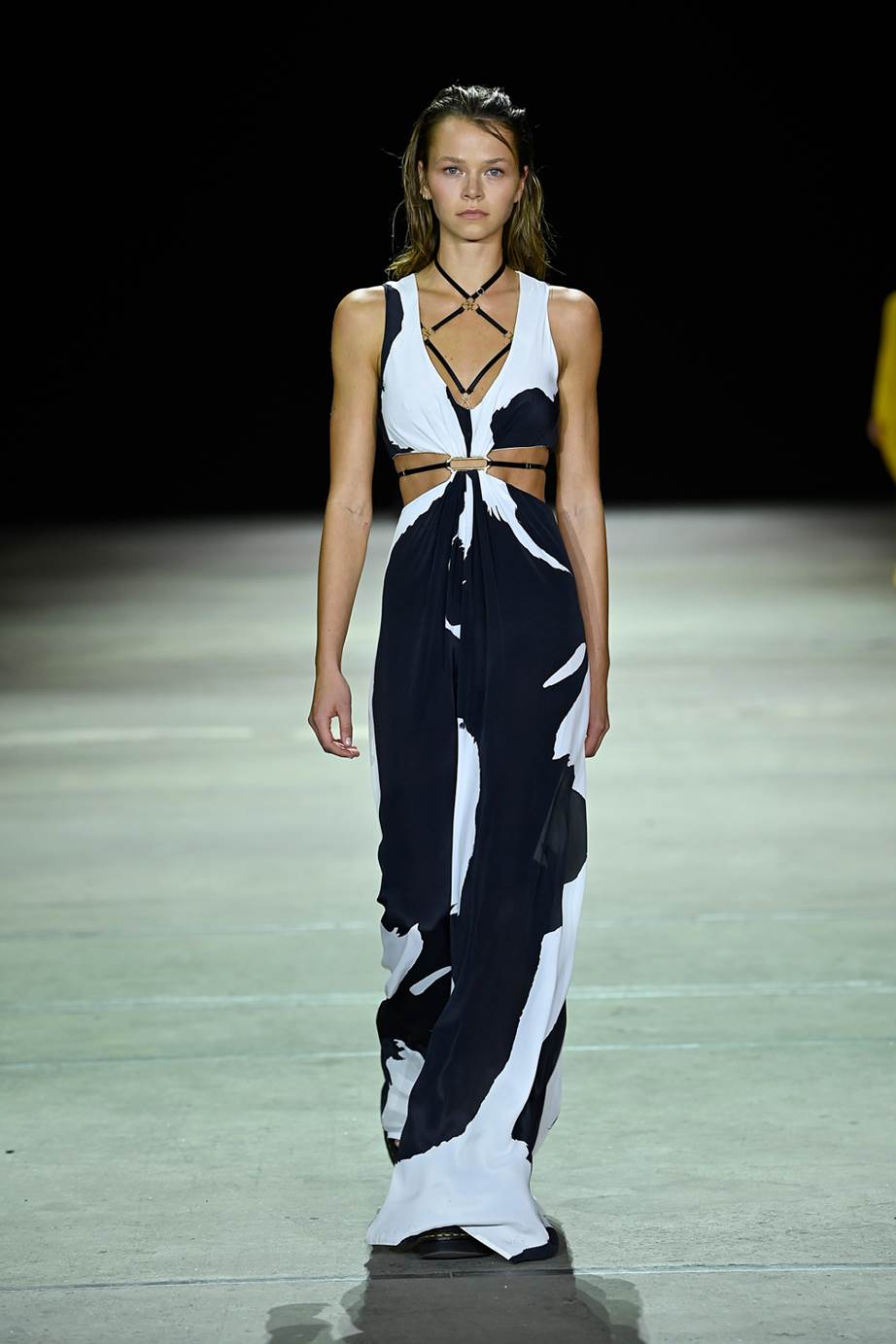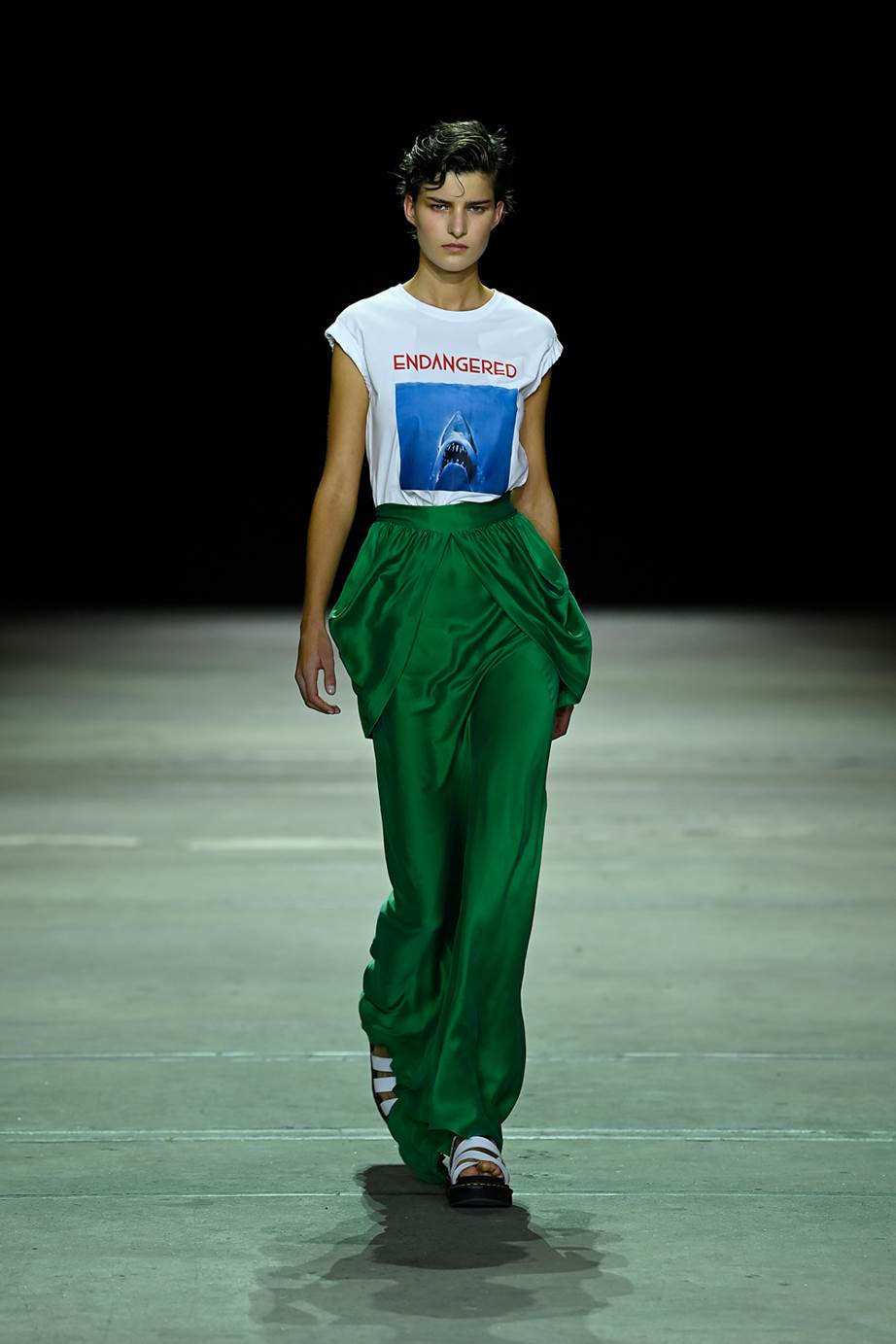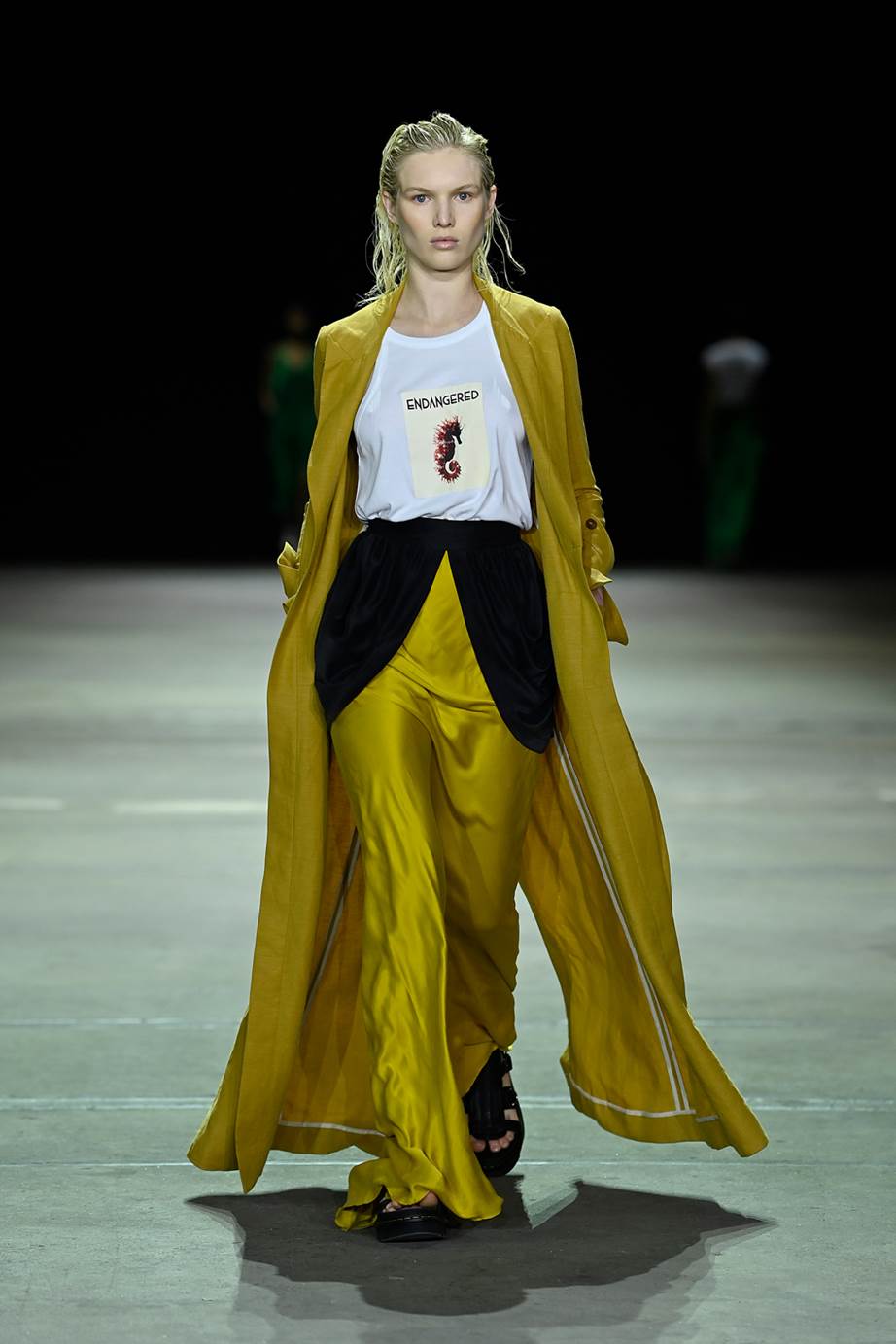Emerging Australian designers are proving that sustainable, local, and innovative design is critical to reducing our carbon footprint.
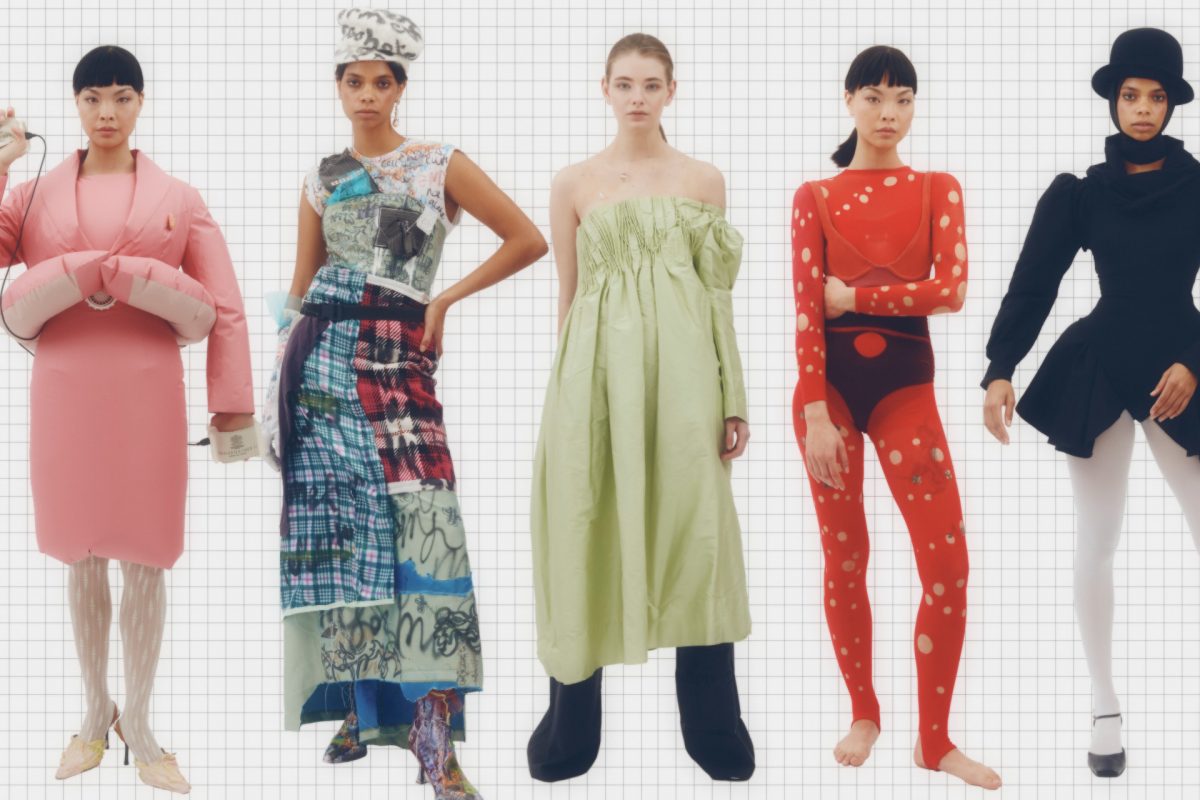
In a mass-produced society, making an impact requires not only an unconventional approach but a degree of ingenuity. There’s never been a more critical time to recognise and nurture our homegrown talent than now – in the midst of the Covid-19 pandemic.
This time in lockdown has been a huge challenge for designers, prompting them to embrace new outlets and concepts to fully realise their creative potential.
Our industry may be smaller than the scale of our international counterparts, but Australia’s strength is in our signature silhouettes, sustainable practices, quality of fabrication and enduring garments.
During this time of global upheaval and change, here are the newest, most cutting-edge fashions from Australia’s emerging talents.
Jake Liu
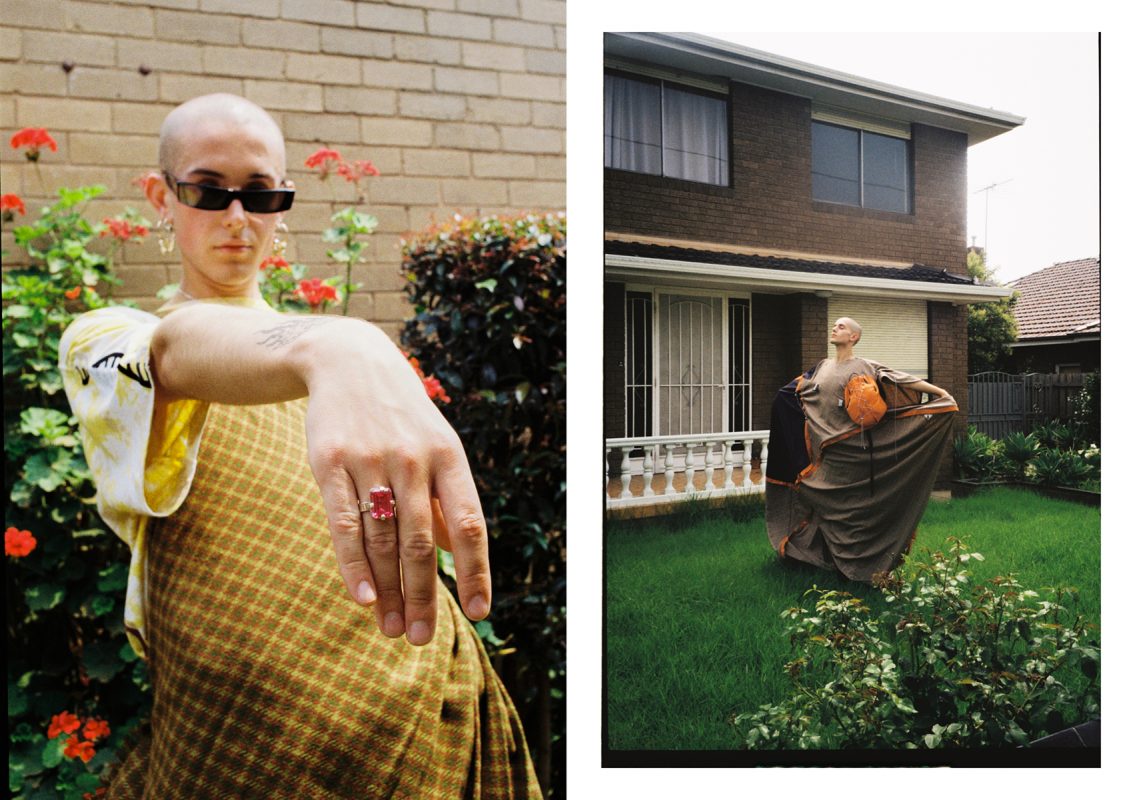
Australia’s Liu disrupts fashion norms, deconstructing preconceived notions of both beauty and gender stereotypes via design. It’s a high-end unisex brand that pushes the boundaries of sportswear.
The pieces are multipurpose, cleverly utilising zippers – outerwear simply transforms into a shirt, coats into bags, and knits into blankets. His designs explore fabrics, finding a unisex spot between tailoring and sportswear. Liu tells Fashion Journal,
“Today, global ideological movements calling for equality or challenging gender boundaries have been translated into fashion design…
Liu goes on to describe the role of gender within his collections, indicating that a simple choice between men and women’s clothing isn’t enough.
“It doesn’t fully represent the world we inhabit. I make clothes that aren’t defined by gender and don’t chase a predetermined demographic.”
His clothing is futuristic, whilst staying true to its former streetwear roots. Liu cleverly distorts the human form with his unusual silhouettes – crafted from traditional textiles like wool, cashmere, silk and crepe de chine.
Tackling Stigma
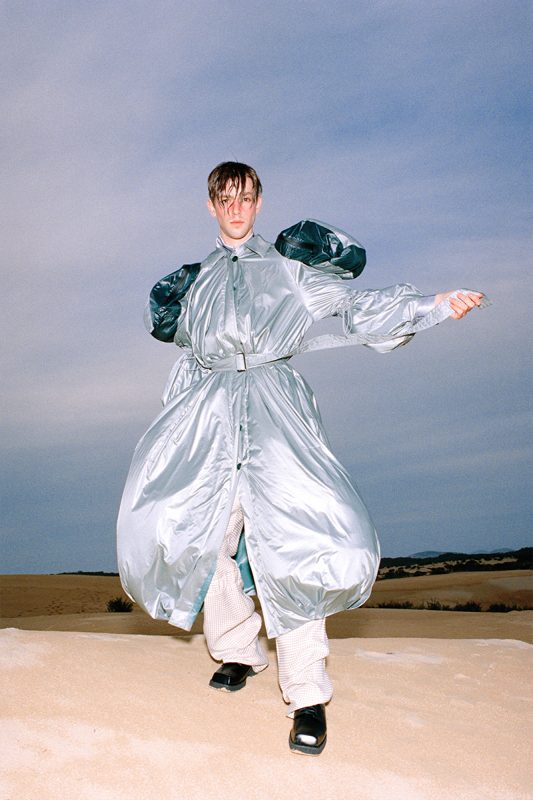
The RMIT graduate completed his honours at the Manchester School of Art. His collection <XX.XY> was selected as a semi-finalist for the 2017 International Emerging Design Competition in Beijing.
The designer was also chosen for the Virgin Australia Melbourne Fashion Festival’s National Graduate Showcase. His 2020 graduate collection tackles the stigma of disability. Liu tells Fashion Journal,
“I started my project by watching films, reading books and researching images. My project addresses the stigma bodies with disability and unconventional bodies face – people with tumours or lumps, as well as those that have different body types to the norm…
He goes on to describe how these people don’t receive equal opportunities in life, adding, “These bodies do not have the choice to look ‘normal’, therefore my fashion aims to disrupt what normal looks like.”
Navigating a changing fashion landscape isn’t easy in 2021. When asked about the challenges he faces as an emerging designer during Covid, he told Vogue, “We are having to adapt to the new emerging fashion system quickly. Small things, like being unable to feel and experience fabrics in real life, are making all decisions around the production of fashion more difficult.”
He goes on to explain he has seen this obstacle as an opportunity to grow and develop his skillset into emerging areas of fashion.
“I started learning to use 3D software to make digital designs at home and using what I have access to, to experiment with DIY textile techniques such as dyeing experiments with natural pigments attained from vegetables and roots.”
Jake Liu is definitely an emerging designer to watch. Shop his range on Dressx here.
Devoi
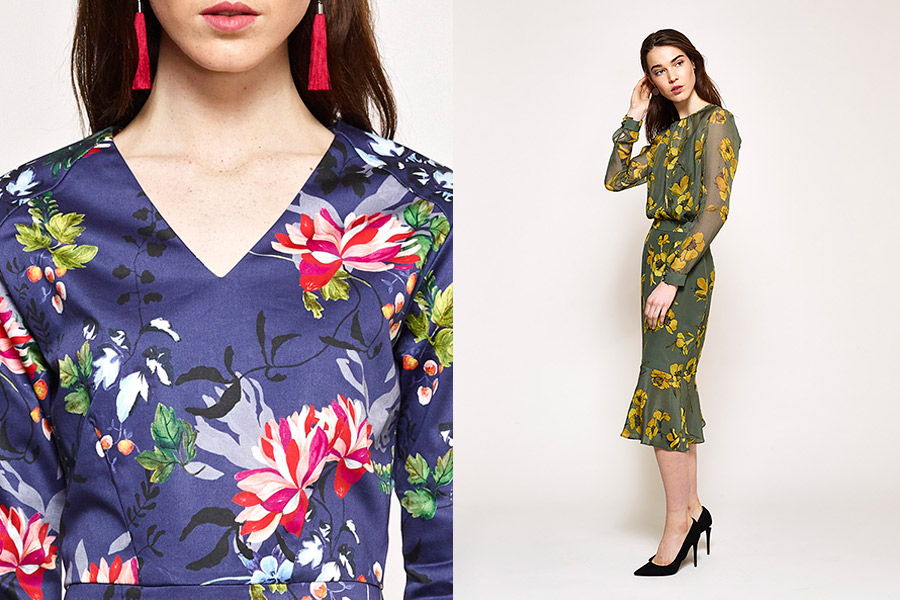
This female-focused label is the result of a serendipitous meeting between Rhianne de Almeid, and Australian lawyer, Cheryl D’Amico at a rooftop bar in Melbourne in 2015. They explain to Finders Keepers, “We both have full time jobs as we work on building the business. So our weekends are devoted to DEVOI.”
The duo have a home studio in Surry Hills. They go on to explain,
“Every day at DEVOI is different – one day may be a photo shoot, another fitting clothes on a model or painting a new bold print to feature in our next collection.”
The pair are passionate advocates of ethical fashion, aiming to curb consumers away from instant gratification. Their mission is to create garments that can be reworn, aiming to provide an alternative to fast fashion.
“We care about how the fashion industry affects the environment… Our GOTS approved fabric mill even uses dyes and digital printing inks that are free from hazardous chemicals like formaldehyde, pesticides and other metals.”
Source: The Fashion Advocate
Based in Melbourne, the slow fashion womenswear label also have a strict zero-waste fabric policy; any excess scraps are used to create accessories like scrunchies!
Shop the range at devoishop.com.
Roylance
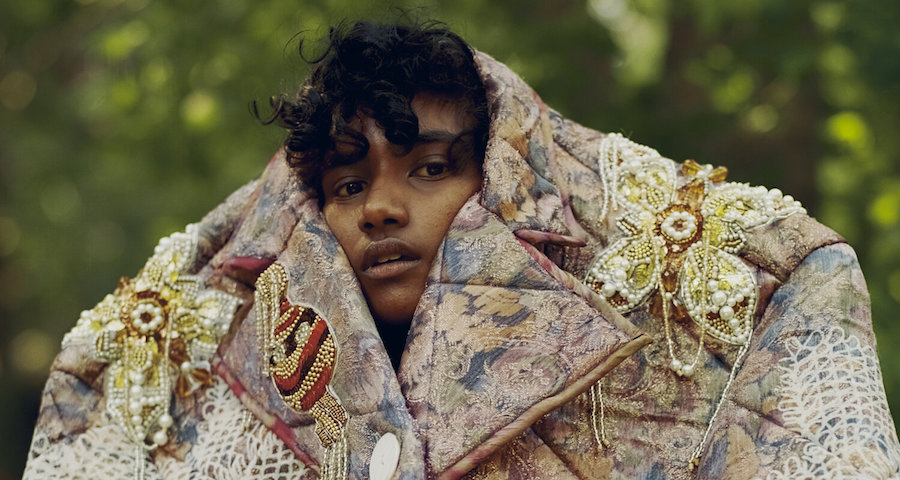
Roylance is an emerging apparel line that combines emotion, craftsmanship, and couture aspects in capsule collections. 25-year-old Domenic Roylance is the designer behind this eponymous label. He is the 2020 recipient of the Carla Zampatti Foundation Design Award and the 2019 Australian Fashion Foundation Scholarship. Zampatti tells the Financial Review that Roylance caught her eye because he understood,
“the effect of an applied aesthetic”
She continues,
“Domenic’s designs have a rich complexity. He uses billowing silhouettes and opulent details with instantaneous impact. He shows us how the medium of fashion can be transporting.”
Pushing Boundaries
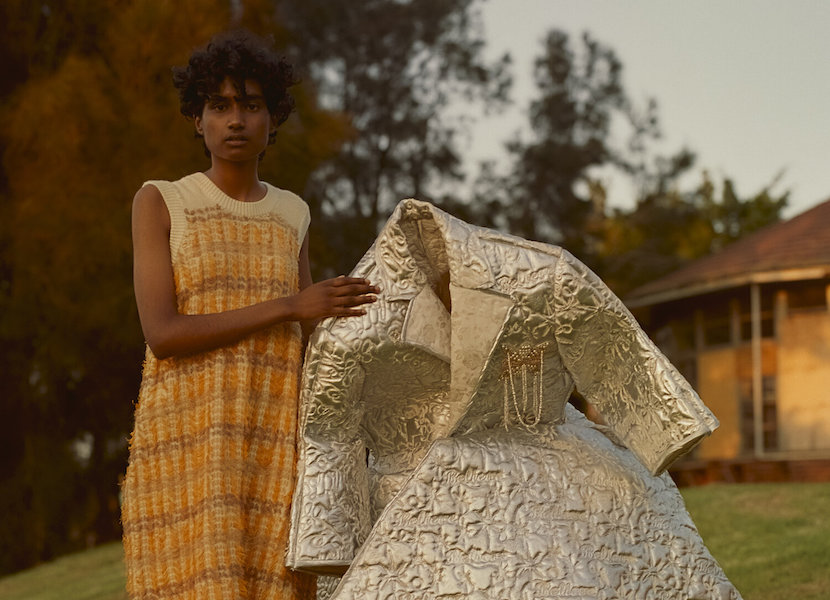
The brand designs exclusively for women, utilising old and new fabrications, aesthetic expression, dramatic silhouettes and historical exploration into his designs. Roylance pushes the limits of contemporary style, challenging the boundaries of how clothing should look.
“They are the kinds of pieces that, if worn by a celebrity, would probably land them on a Worst Dressed List. So, OK, maybe they’re not “fashionable” in the strictest sense. The best clothes, the most original ones, never are.”
Source: Australian Financial Review
His construction is unconstrained and non-traditional, bearing somewhat of a resemblance to Rei Kawakubo’s work for Commes des Garçons.
Speaking of sustainability, Roylance tells Fashion Journal,
“I think of sustainability through a different lens as well: I would love for the pieces I create to not be disposable — the idea of holding onto the clothing because it has value for as long as you live, and then passing it on, is a manifestation of sustainability.”
Roylance frequently experiments with volume, taking proportion to new heights. He’s landed spots in Australian Vogue (where he was spotted by Billie Eilish) and Apple advertisements.
His affinity for maximalism and signature use of laminate quilting results in a delightful and cartoonish rendition of the avant-garde.
His manipulation of proportion and texture have resulted in garments that you just can’t take your eyes off.
Credit: Flaunter
Roylance, like his aesthetic, is one to keep an eye on. Check it out here.
KITX
KITX is a pioneer in sustainable and ethical fashion. Founder Kit Willow celebrates her love of creation and nature via her thoughtful design process. She is a huge advocate for fashion’s eco future, taking sustainability into account at every stage of design thru to production.
Starting with a capsule collection that includes lingerie and eight separate pieces, Willow’s namesake label was launched in 2015.
She explains on her website,
“we create product love with high frequency wear, superior quality and creative design while consciously sourcing materials that minimise harm to our planet’s precious resources.”
Willow is a genius of drapery, with signature cuts, prints and colour combinations. Her 2017 Fall collection took years to develop, with paillettes crafted entirely out of recycled bottle caps.
She prefers to use 100 per cent organic silk, or cupro, which is manufactured from recycled cellulose (a byproduct of cotton). She also uses linen, which is organic and consumes less water and fertilisers than cotton.
It’s easy to see via her body of work that sustainability is a high priority for Kit Willow.
Industry Leaders
In 2019, KITX was chosen to show her artisanal designs at Buckingham Palace.
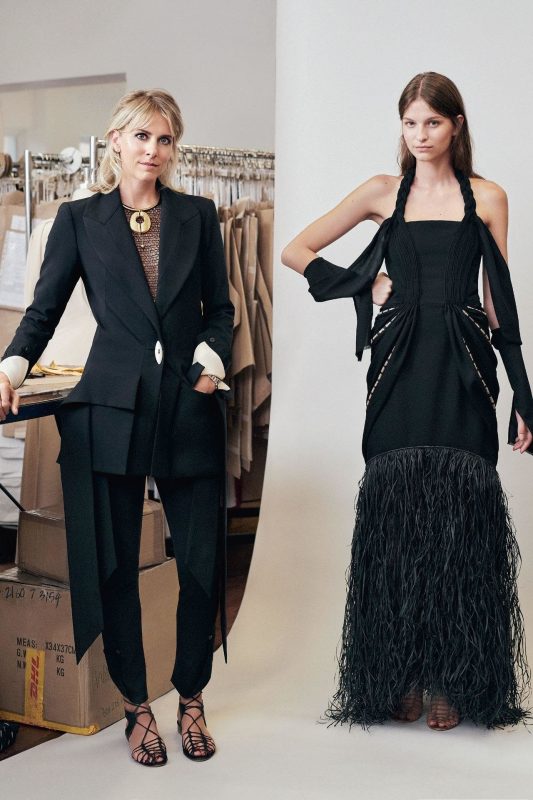
The event, the Commonwealth Fashion Exchange, pairs designers with artisans in British Commonwealth nations to create environmentally conscious pieces. Willow tells Vogue,
“Surrounded by industry leaders, royalty, and heads of government—it really feels like the beginning of the whole industry coming together to support this movement.”
Having dedicated herself to ethical design practices from the start, she likes to bring awareness to the sustainability cause. She continues, “Fashion is the second-biggest polluter in the world, and a lot of it comes down to the materials.”
“We forget that fashion starts at the dirt level. It starts with the farmers, the cotton crops, the dyeing, the deforestation of trees for [wood-based fabrics like] viscose . . . . It has a profound effect on water and land, which is where we’re seeing the impact now.”
Willow’s ongoing commitment to conscious and environmentally friendly design took centre stage at this year’s Australian Fashion Week. The designer showcased her collection, UNDERWORLD, which focuses our attention on the oceans. She tells Elle,
“Right now over 37,400 species are considered endangered and at risk of extinction— primarily due to human activity. It is crucial to protect what we have left of the natural world and it’s environments,”
She continues,
“The time is now, it is important to collaborate and share storytelling. Solutions do exist—when science meets compassion with creativity.”
Our favourite items are Willow’s collection of Endangered Tees. They’re a staple of the brand, a form of visual activism that pledges donations to various causes including Bee The Cure and The Port Macquarie Koala Hospital.
Check out the full KITX collection online.
Replica Project
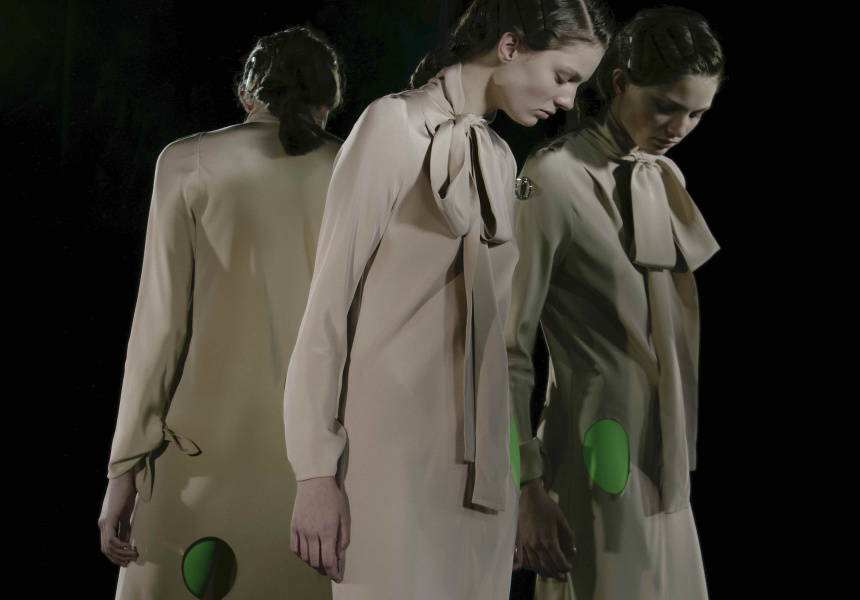
Designer Amanda Nichols was tipped as one of the emerging designers to watch at the National Graduate Showcase 2019. She’s worked on major films like Australia, The Great Gatsby, and Ridley Scott’s Alien Covenant as a costume cutter and maker.
Founded in 2018, Replica Project #1 investigates the term ‘replica’ as a design process within the overlapping realms of fashion and costume.
The project uses subversive reproduction of archive forms to remark on modern, luxury fashion machinery, drawing on Nichols’ expertise in haute couture workrooms and film costume studios. She tells Fashion Journal, “I guess I loved the cross-pollinations of the two practices.”
Nichols has even designed outfits for Schiaparelli and Givenchy. And as part of the Nextgen exhibition during Afterpay Australian Fashion Week, Replica Project #2 debuted with its first commercial line. The collection draws inspiration from Madeleine Vionnet, a French fashion designer who founded her label in 1912.
Discussing her AAFW debut, she tells Fashion Journal,
“Within the collection, there are timeless pieces and there should be something there for everyone and it’s up to you how you want to style it,”
Sustainability and wearability are high on the priority list for the designer.
“Our ethos is to make really beautifully cut and constructed garments and their sustainability is that they should carry you through – you should have these pieces in another ten years and still be wearing them.”
Replica Project pieces are available online, however, the gowns are by appointment only.
Subscribe to FIB’s Weekly Breaking News Report for your weekly dose of music, fashion and pop culture news!

